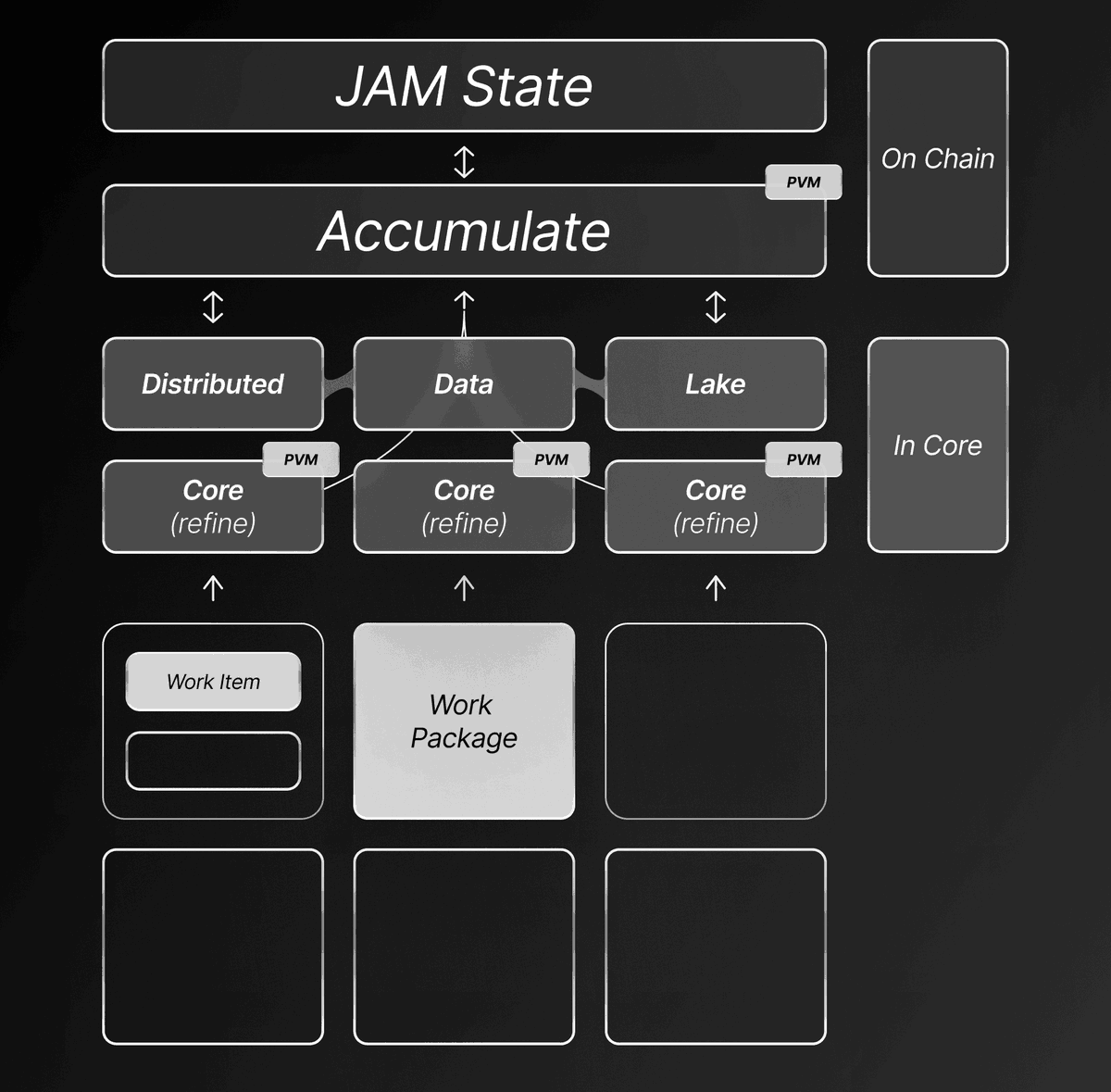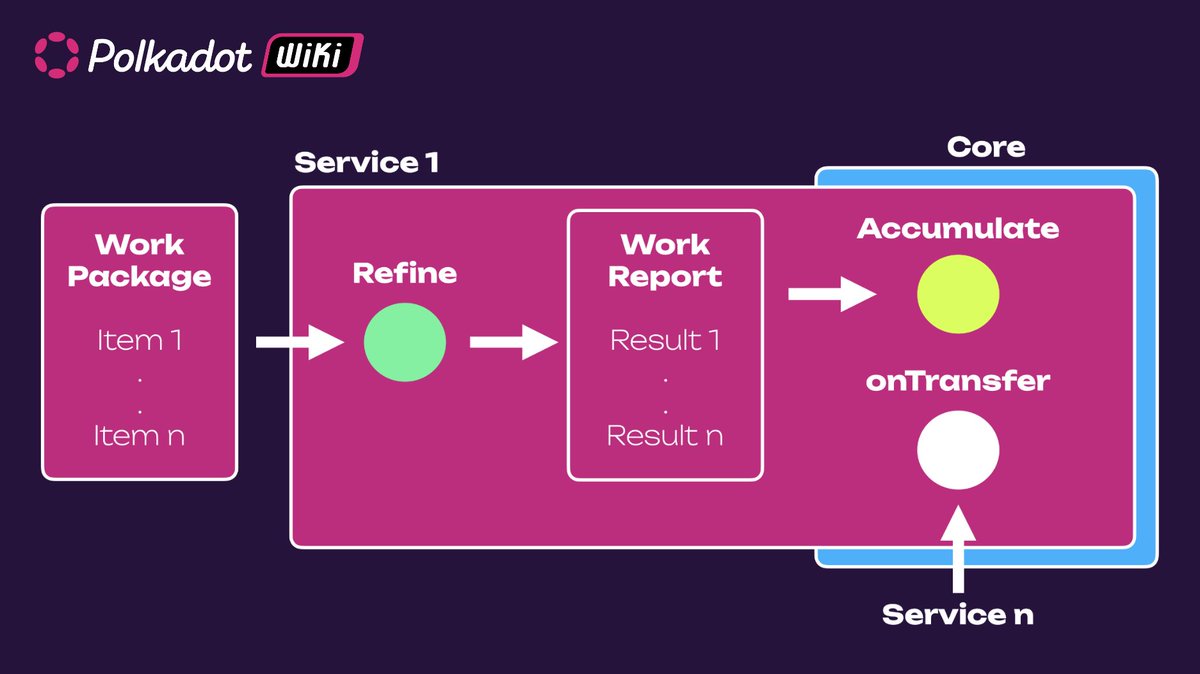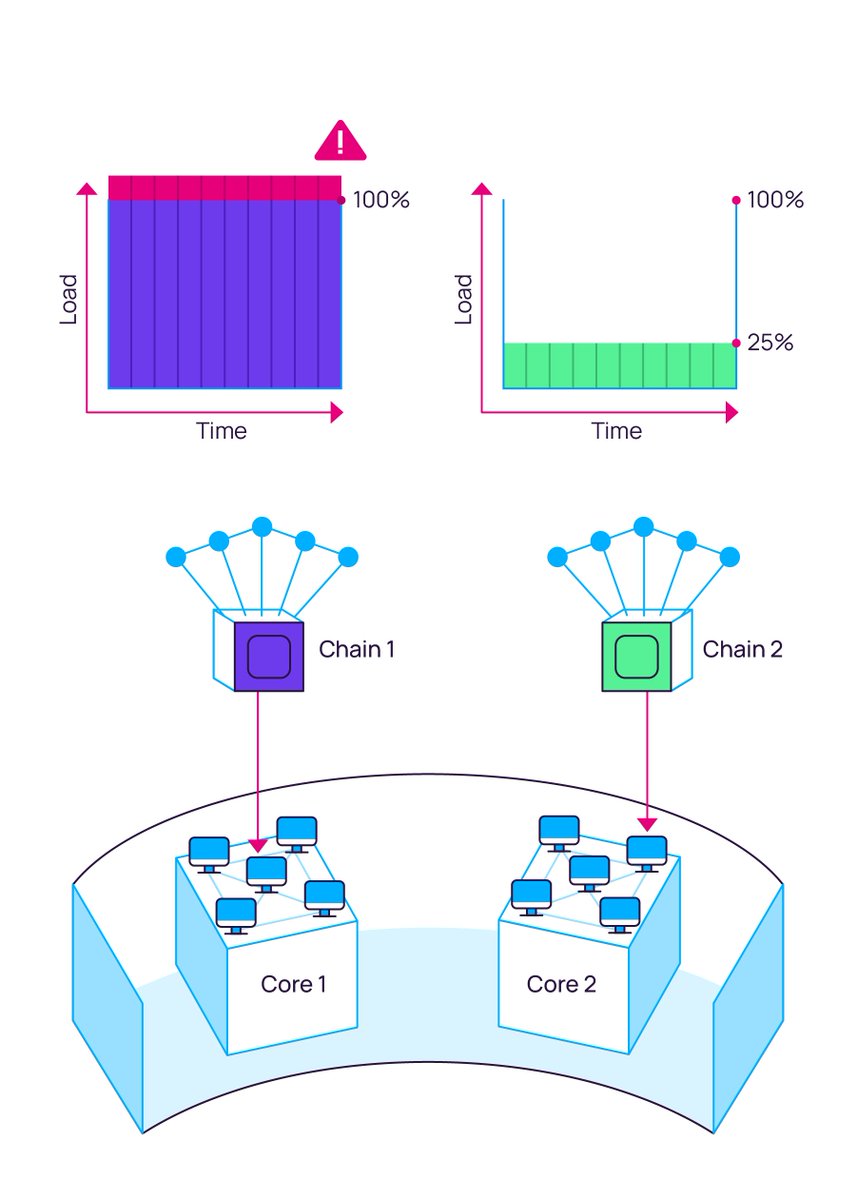JAM is after 2.0, it is accelerating research and development, with more than 30 teams, different programming languages, and different development teams to implement a decentralized JAM client (based on the JAM gray paper protocol).
The earliest ETH was all transactions, which required all validators to verify together (this part can actually be read in the Ethereum Yellow Book, and there is a better interpretation version).
L2 is to let a smaller subset of the chain perform calculations, in two ways, one L2 is a fraud proof (repeatedly execute the transaction code after finding fraud to verify), and the other L2 is a zk proof, which does not require double calculation, but needs to use zk's more expensive GPU to generate proofs.
Earlier @Polkadot 1.0 used an algorithm called ELVES, which is not like ETH's fraud algorithm, which uses passive verification, but uses a probabilistic type of algorithm for active verification. @polkadot 2.0 verification set, it has been packaged into a concept called Core, core is essentially a subset of the verification set, 2.0 supports Agile Coretime, that is, the dynamic use of core, 1.0 can only use one core per chain, 2.0 is about to go live and support Agile Coretime, that is, a chain can dynamically use coretime (number of verification subsets) according to needs, thereby increasing the service load of the system.
JAM is based on the above ideas, and with so many zk, OP, smart contracts, and even ordinary web2 stateless applications, can it be a step closer to abstracting services to adapt to these different application models, and allow them to interact with each other. So JAM took a step closer to abstraction on this basis.
- A variety of different L2/parachain things are now called services
- Block/transaction stuff is now called a work item or work package
- A work item is a service, while a work package is a set of work items
- The service is described by three entry points, two of which are fn refine() and fn accumulated
- The names of these two entry points are exactly why the protocol is called JAM: Join Accumulate Machine. Joining refers to fn refine(), where all Polkadot cores perform a lot of work in parallel for different services. Concatenation refers to the distillation of data into a smaller subset and then passing it on to the next stage.
- Accumulation refers to accumulating the results of all of the above operations to the main JAM state
- Different forms of services are supported (OP rollups, zkrollups, parachains, stateless applications, smart contracts)
The ETH era is a single-column state machine with shared state,
@polkadot 1.0 era is interoperable probabilistic shards.
@polkadot 2.0 era is the Agile Coretime machine.
The JAM era is the Join Accumulate Machine (JAM)
There are many detailed features, here is only what I understand information synchronization, more in-depth understanding why, JAM can achieve continuous running programs, without the need to call up programs through transactions, what new model products will be produced when this kind of feature is combined with DEFI in the future? Why JAM can run stateless applications such as JAM DOOM. See the video for details:
Study materials:



Polkadot 2.0 is about to launch on the @Polkadot mainnet.
This is the biggest update in years, aside from the unfinished JAM.
Definition of Polkadot 2.0:
Polkadot is a multi-core decentralized computing network that provides highly resilient and verifiable computing power through virtual cores. Chains that run continuously in parallel on different virtual cores are called Rollup chains.
Core features:
- Asynchronous support: Allows for pipelined operations, enabling a more efficient Rollup system that provides higher throughput for Rollups without compromising security.
- coretime: Allows for flexible allocation of cores to execute on the Polkadot decentralized computer.
- Elastic scaling: Allows the same Rollup chain to use multiple cores simultaneously to increase throughput.
Compared to Polkadot 1.0, which used slot auctions (the most criticized mechanism), 2.0 abandons the slot auction model in favor of [coretime], creating an agile market. In this market, coretime will become a commodity that can be tokenized, sold, and traded. Rollup chains can purchase:
- Bulk coretime: A standard way to purchase core time at a fixed price and fixed term through the coretime system chain, with predictable renewal prices.
- On-demand coretime: Continuously sold coretime that can be purchased on demand for immediate use at spot prices.
In 1.0, a chain could only use one coretime, but in 2.0, coretime can be flexibly used on demand, as shown in the diagram below:
A few months ago, 2.0 was already launched on KSM and is about to land on the Polkadot mainnet.

11.16K
23
The content on this page is provided by third parties. Unless otherwise stated, OKX is not the author of the cited article(s) and does not claim any copyright in the materials. The content is provided for informational purposes only and does not represent the views of OKX. It is not intended to be an endorsement of any kind and should not be considered investment advice or a solicitation to buy or sell digital assets. To the extent generative AI is utilized to provide summaries or other information, such AI generated content may be inaccurate or inconsistent. Please read the linked article for more details and information. OKX is not responsible for content hosted on third party sites. Digital asset holdings, including stablecoins and NFTs, involve a high degree of risk and can fluctuate greatly. You should carefully consider whether trading or holding digital assets is suitable for you in light of your financial condition.

